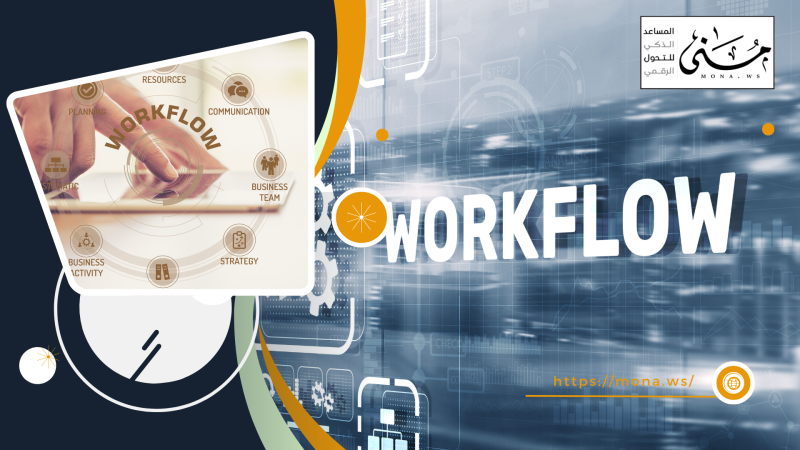In a world where data has become the core of decision-making within organizations, understanding data analytics terminology is now essential for every administrator, analyst, researcher, and team leader. Today, data is no longer just numbers and stored information—it is the fuel of modern strategies and a major driver for forecasting, business development, and performance improvement.
Key Data Analytics Terms
1. Data
Data is the foundation from which all analysis begins. It comes in the form of numbers, text, images, digital transactions, or even audio content. Organizations collect data from various sources such as sales systems, customer messages, IoT devices, HR systems, and more.
The more diverse the sources, the richer and more accurate the resulting analytics become.
2. Information
Data becomes information when it is organized within a clear context.
For example, knowing that 1,200 customers performed a specific action this week is information that can support decision-making or trend analysis.
Information is the first step in extracting meaning and value from raw data.
3. Data Analysis
Data analysis is a set of processes that include collecting, cleaning, processing, and modeling data to extract insights that help an organization make better decisions.
It includes detailed steps such as pattern detection, comparisons, performance evaluation, and risk assessment.
Organizations that rely on analysis have a stronger ability to innovate and compete.
4. Data Mining
Data mining is the process of searching through large datasets to discover hidden patterns and relationships. It uses AI, statistics, and machine learning techniques.
Example: discovering that customers in a specific region buy certain products more than others.
This type of analysis helps build accurate, data-driven strategies.
5. Descriptive Analytics
This type answers the question: What happened?
It relies on analyzing historical data to summarize performance, such as:
-
Total number of orders during the month
-
Growth rate
-
Average processing time
Descriptive analytics is the foundation upon which more advanced analytics are built.
6. Diagnostic Analytics
After understanding what happened, diagnostic analysis focuses on why it happened.
It uses tools such as comparisons and root-cause analysis.
Example: Why did sales drop? Was it competition? Customer experience issues? Low inventory levels?
Diagnostic analytics helps organizations address problems at their root.
7. Predictive Analytics
Predictive analytics uses artificial intelligence to forecast what may happen in the future, such as:
-
Predicting increasing demand
-
Forecasting stock movement
-
Predicting customer churn
It relies on studying historical patterns and converting them into reliable future predictions.
8. Prescriptive Analytics
This is the peak of analytics maturity and answers the question: What is the best action to take?
It provides practical recommendations such as:
-
Optimal production quantities
-
Best timing for launching a campaign
-
The most efficient cost-reduction action
Prescriptive analytics supports precise and strategic decision-making.
9. Big Data
Big data refers to massive datasets characterized by three features:
-
Volume
-
Velocity
-
Variety
Processing big data requires advanced systems like Hadoop and Spark, and it is used in sectors such as healthcare, security, commerce, and government services.
10. Data Quality
Data quality refers to the accuracy, completeness, consistency, timeliness, and reliability of data within organizational systems.
It is not just a technical concept—it is a key factor that determines an organization’s ability to make correct, fact-based decisions.
Poor-quality data leads to incorrect decisions, financial losses, operational disruptions, and distorted performance indicators.
High-quality data, on the other hand, gives organizations a clearer view of reality, enabling stronger strategies, more accurate forecasts, and scientifically grounded decisions.
For this reason, modern organizations adopt strict policies to protect data quality, such as:
-
Setting clear rules for data entry and validation
-
Regular reviews to detect errors and duplicates
-
Continuous updates to maintain data freshness
-
Applying digital governance standards to prevent inconsistency
-
Using advanced systems like DocSuite, which relies on automatic data validation and error reduction
These measures ensure a continuous flow of accurate, reliable data to analytics tools and dashboards, increasing management confidence in decision-making.
11. Data Cleaning
Data cleaning refers to the set of steps used to remove duplicates, correct errors, handle missing values, and unify data formats to ensure readiness for accurate analysis.
When data contains errors—such as entry mistakes, inconsistent formats, duplicate records, or missing fields—the resulting analysis will be inaccurate or misleading.
This is why experts say that data cleaning represents 70–80% of a data analyst’s work.
Key cleaning practices include:
-
Removing duplicates
-
Correcting mistakes
-
Filling missing values
-
Standardizing formats
-
Ensuring consistency across systems
Modern platforms like DocSuite offer intelligent tools that automatically detect errors and enhance data quality, reducing human effort and increasing reliability.
12. Data Visualization
Data visualization is the graphical representation of data to make it easier to understand. Tools include:
-
Power BI
-
Tableau
-
Charts
-
Heat maps
Visualization improves communication and helps teams understand trends quickly.
13. Dashboard
A dashboard is an interactive interface that displays the most important real-time performance indicators.
It enables leaders to track performance and make fast, informed decisions.
Dashboards simplify data through clear charts, eliminating the need for lengthy reports.
14. Structured Data
Structured data is data organized in tables and databases, making it easy to store and analyze using languages like SQL.
It includes customer records, inventory details, and sales logs.
Its clarity and consistency make it widely used across administrative, financial, and ERP systems.
15. Unstructured Data
Unstructured data has no fixed format or predefined structure, such as text messages, images, videos, audio recordings, and social media posts.
It makes up the majority of internet content and requires advanced AI techniques—like natural language processing and image recognition—to extract useful insights.
16. AI in Analytics
Artificial intelligence adds tremendous power to analytics by enabling:
-
Predictive models
-
Natural language processing
-
Behavioral analysis
-
Pattern detection
AI is now an essential component of modern data analytics.
17. Machine Learning
Machine Learning is a branch of AI that enables systems to learn from data and generate results automatically.
Organizations use it for:
-
Product recommendations
-
Fraud detection
-
Anomaly detection
The more data available, the more accurate the models become.
18. Key Performance Indicators (KPIs)
KPIs are measurable indicators that show how well an organization is achieving its goals. Examples:
-
Growth rates
-
Order processing time
-
Customer satisfaction rates
KPIs give a clear view of performance and help refine strategies.
19. Open Data
Open data refers to datasets that are freely available without restrictions, often published by governments, public institutions, or international organizations to enhance transparency and support innovation.
Open data is used in:
-
Scientific research
-
App development
-
Improving public services
-
Supporting startups
They provide valuable insights such as:
-
Economic indicators
-
Air quality
-
Population statistics
-
Transportation data
-
Infrastructure maps
Open data has become a fundamental part of digital government initiatives.
20. Practical Example: “Reports & Analytics in DocSuite”
Modern organizations rely on advanced systems to improve analytics efficiency.
One of the most powerful examples is the Reports and Analytics feature in DocSuite.
This feature enables organizations to:
-
Generate instant performance reports
-
Analyze work orders, assets, maintenance, and inventory
-
Detect patterns and operational bottlenecks
-
Measure KPIs accurately
-
Support strategic decisions with real-time insights
For instance, a maintenance department can monitor failure rates, evaluate technician performance, and analyze spare-parts costs—all through an interactive dashboard.
This directly improves quality, reduces costs, and accelerates operations, demonstrating the true value of data analytics.
Conclusion
Understanding data analytics terminology is not just technical knowledge—it is an essential skill for making fact-based decisions rather than assumptions.
With the continuous development of intelligent platforms like DocSuite, organizations now have powerful tools to transform data into decisions that drive higher efficiency and faster growth.










Comments
Add New Comment